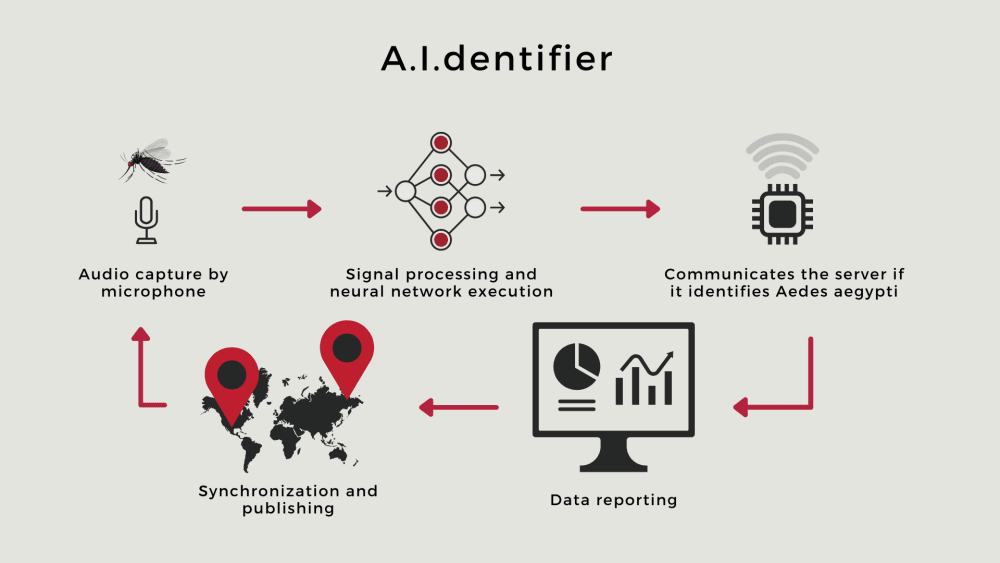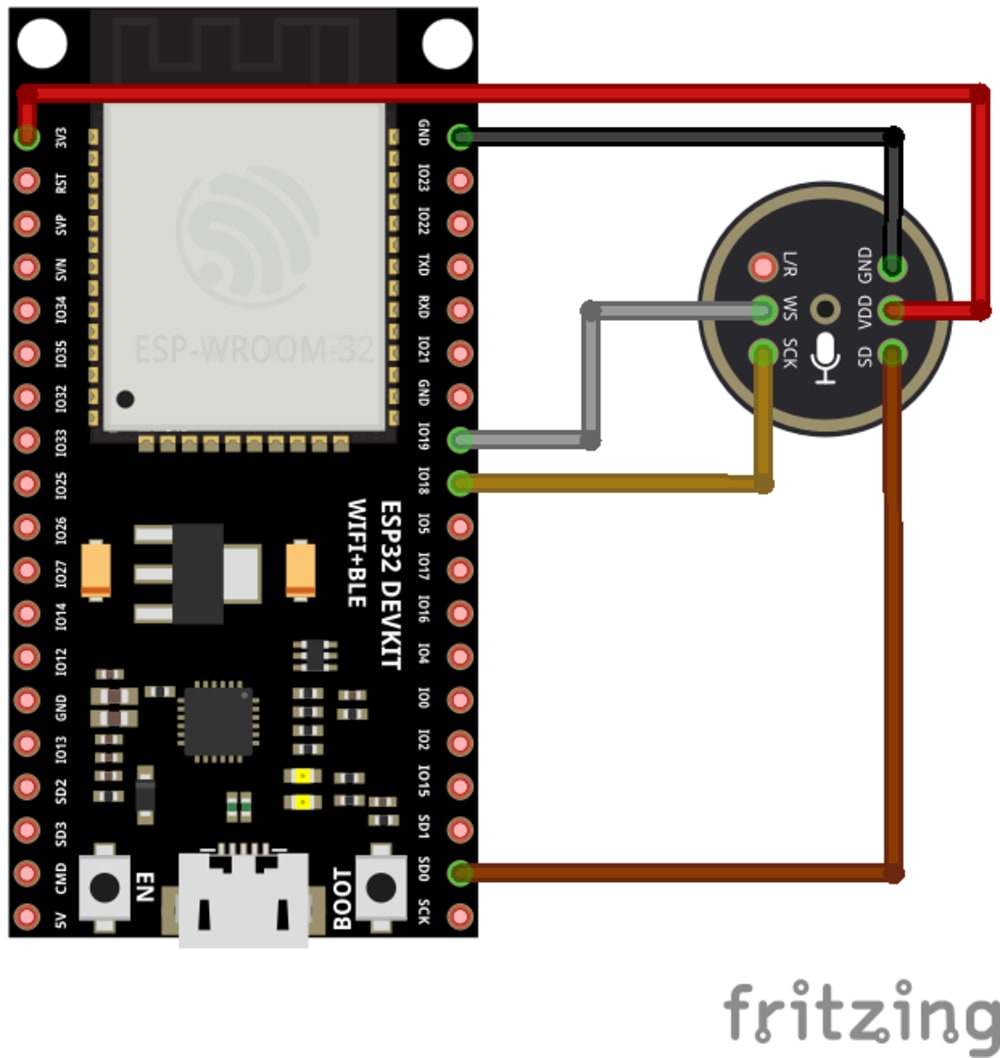
For over 30 years several countries, especially in Latin America and Africa, have been facing increasing epidemic crises caused by the Aedes aegypti mosquito. However, the methods implemented to fight this species failed to contain the mosquito proliferation, since there is no real-time and effective mapping of the affected regions. Our system seeks to unite the Internet of Things (IoT) technology and convolutional neural networks to identify mosquitoes of the Aedes aegypti species, in order to benefit from the advantages provided by modern technology, such as low operating cost, speed and practicality in the visualization of data to identify and predict the presence and movement of this mosquito.
The A.I.dentifier brings an intelligent and innovative solution to help against the mosquito. Our product proposes the detection of Aedes aegypti from the ambient audio capture, using a microphone that is connected in an embedded system and the processing of the gattered recordings. The data is analyzed using a neural network, that realizes the detection of the mosquito and gives feedback to the server in real time, integrating it to a dashboard containing the map of the affected areas. It should be noted that the joint functioning of the sensor signals spread in different locations will allow the identification of the movement of the mosquito population. Thus, tools capable of predicting the spread of Aedes aegypti outbreaks with agility can be developed, based on the crossing of the history of multi-regional proliferation.
Although some members of our team have already worked on the development of an application to identify this mosquito using smartphones and have obtained good results [1] , there is no similar technology applied to embedded systems in the literature or in the market. Therefore, implementing this project on an IoT device is an innovative solution to a long-term problem of worldwide proportions. For the prototype that is being developed, the use of an INMP441 omnidirectional microphone module connected to an ESP32 microcontroller is being studied. Thus, the proposed system has an enormous potential to be marketed globally, as it allows real-time monitoring of the incidence of Aedes aegypti in various locations, allowing for the simultaneous prediction of possible epidemic crises in different territories and, consequently, saving lives. Last but not least, this new technology can be easily changed to identify other mosquito vectors of other diseases, such as malaria and leishmaniasis, thus expanding the range of application of the device and helping to prevent new cases of these diseases.
-
Awards
-
 2021 Top 100 Entries
2021 Top 100 Entries
Like this entry?
-
About the Entrant
- Name:Luiz Felipe De Moura
- Type of entry:teamTeam members:Students
Luiz Felipe de Moura
Eduardo Raupp Peretto
Mateus Schein Cavalheiro Corrêa
Lucas Kendrick Dal Castel
Advisors
José Rodrigo Furlanetto Azambuja
Weverton Luis da Costa Cordeiro
Mariana Recamonde Mendoza - Software used for this entry:Fritzing
- Patent status:none





